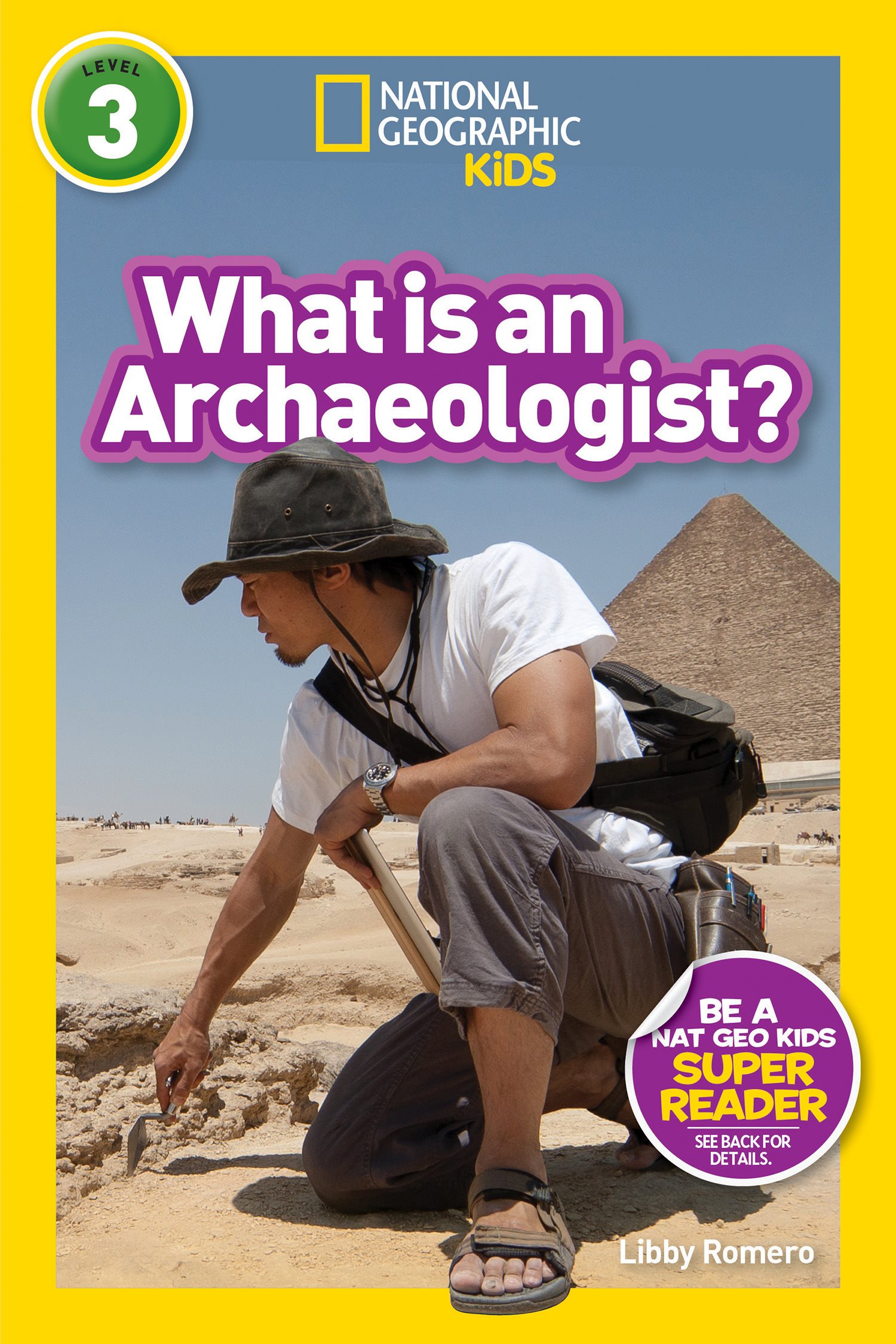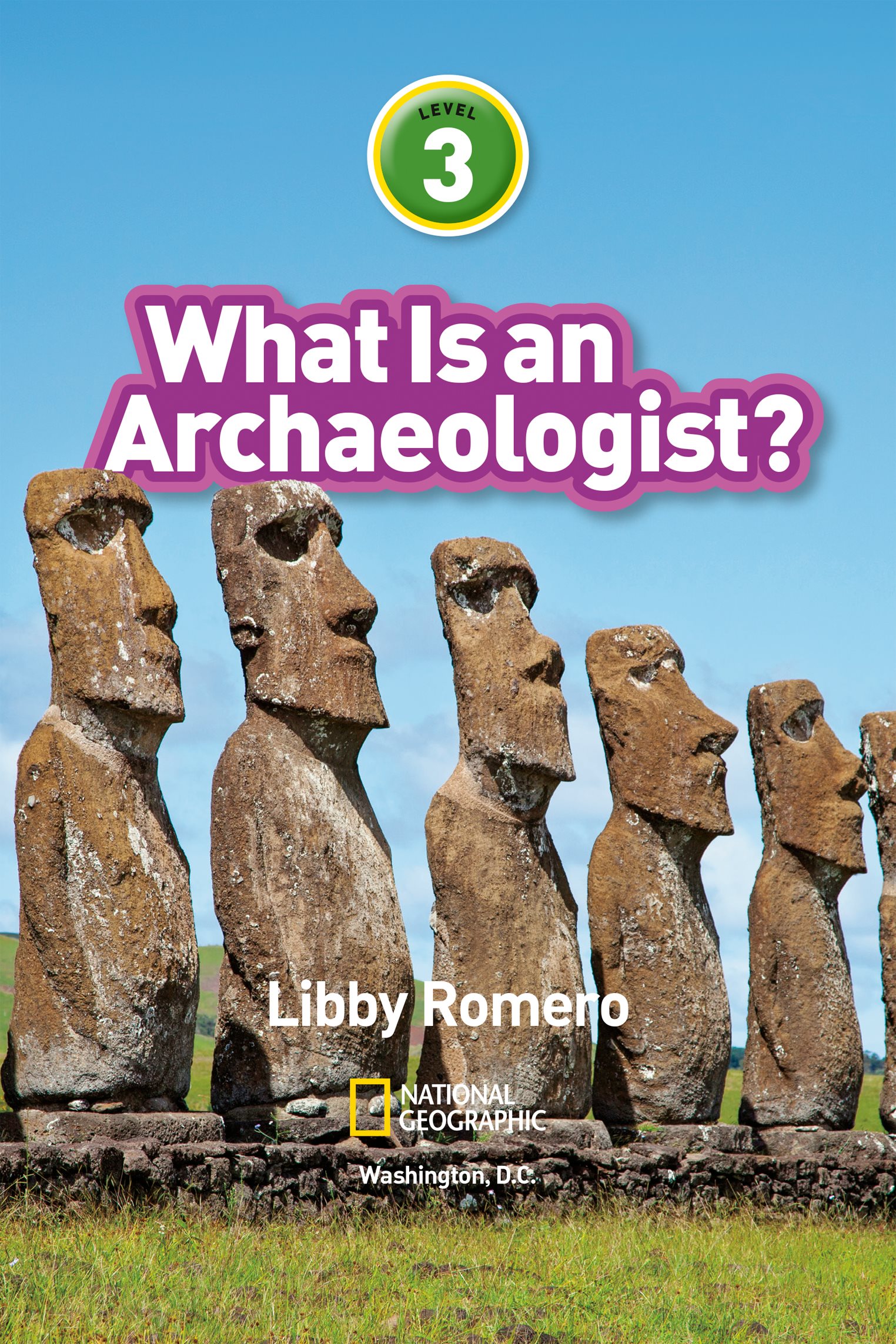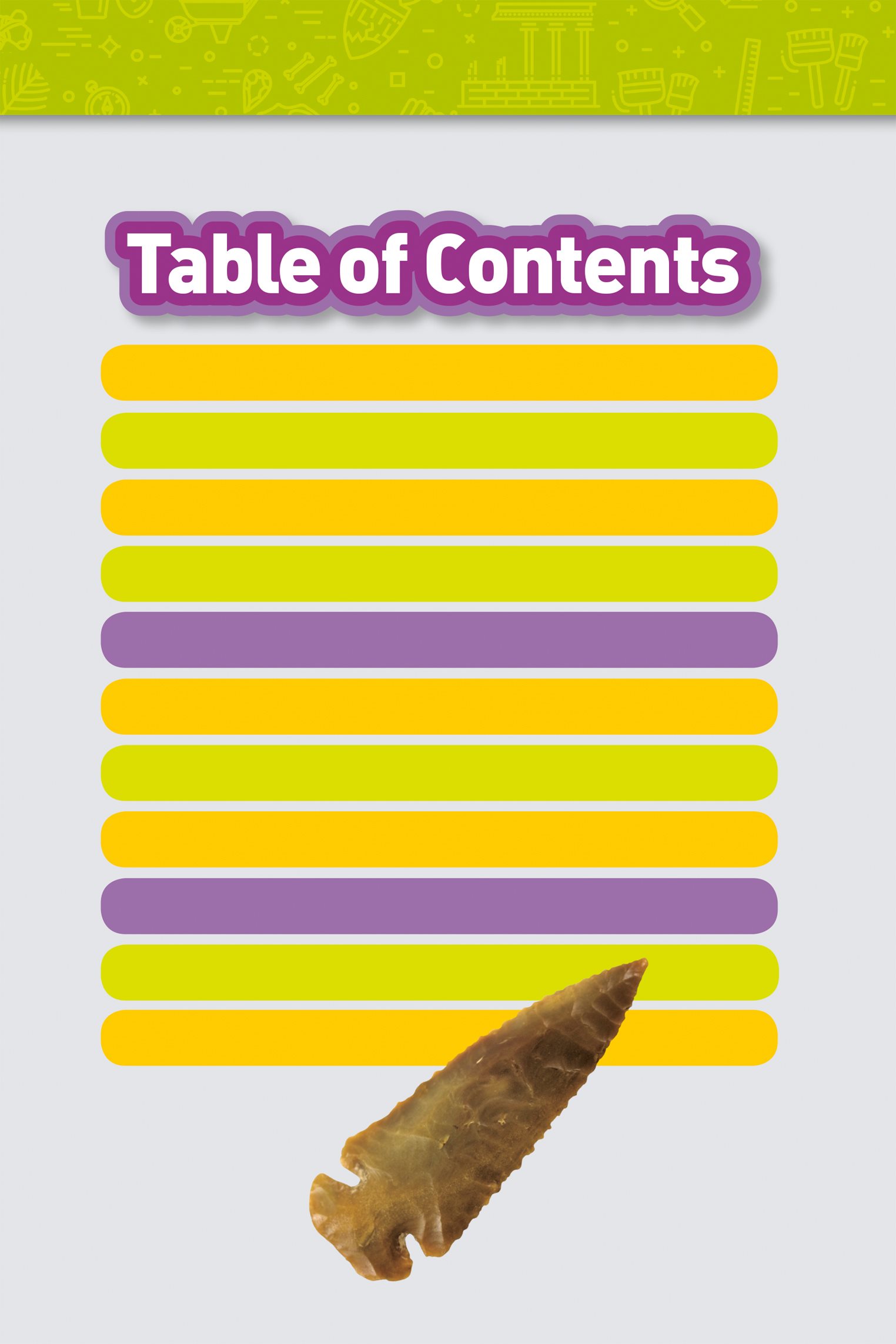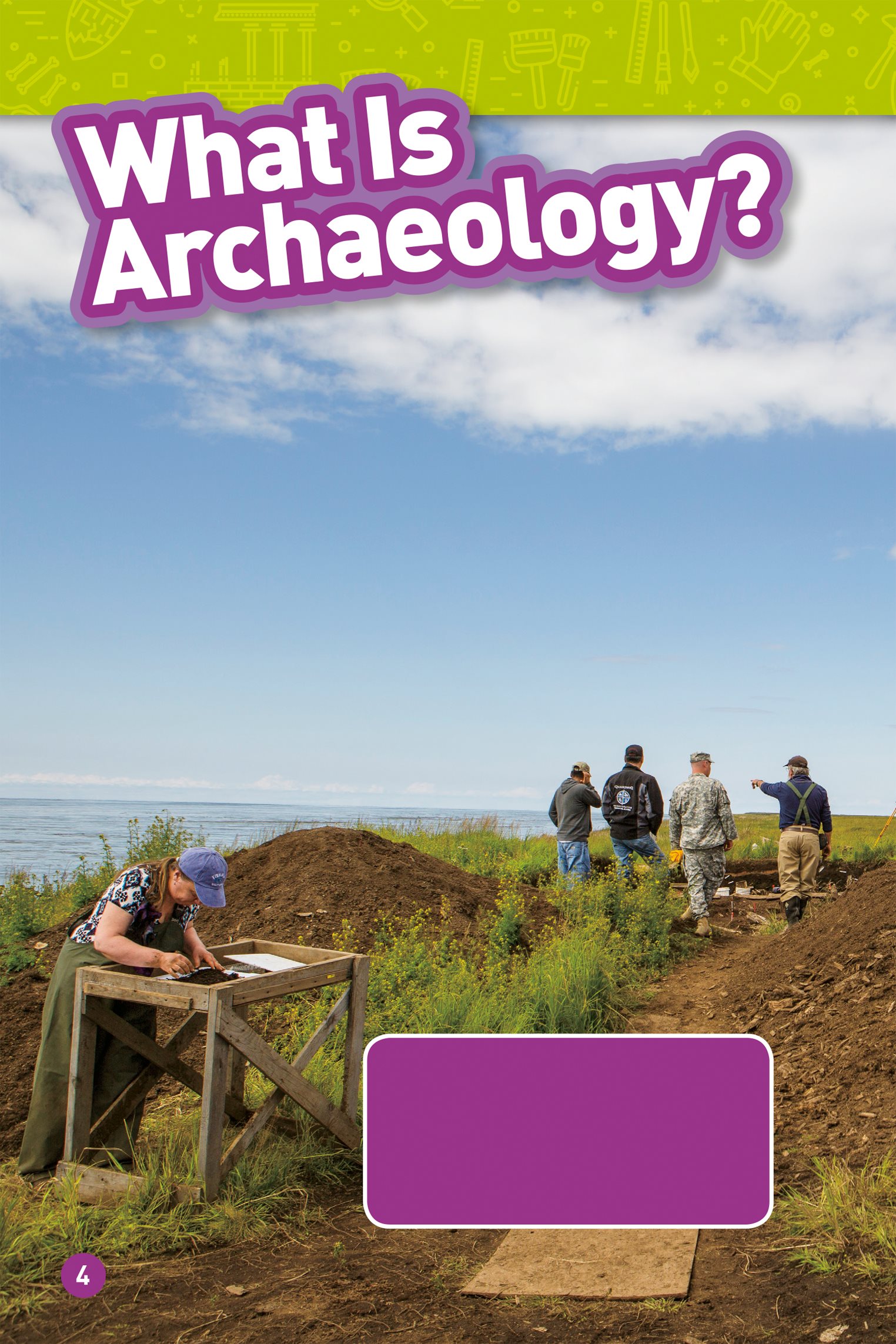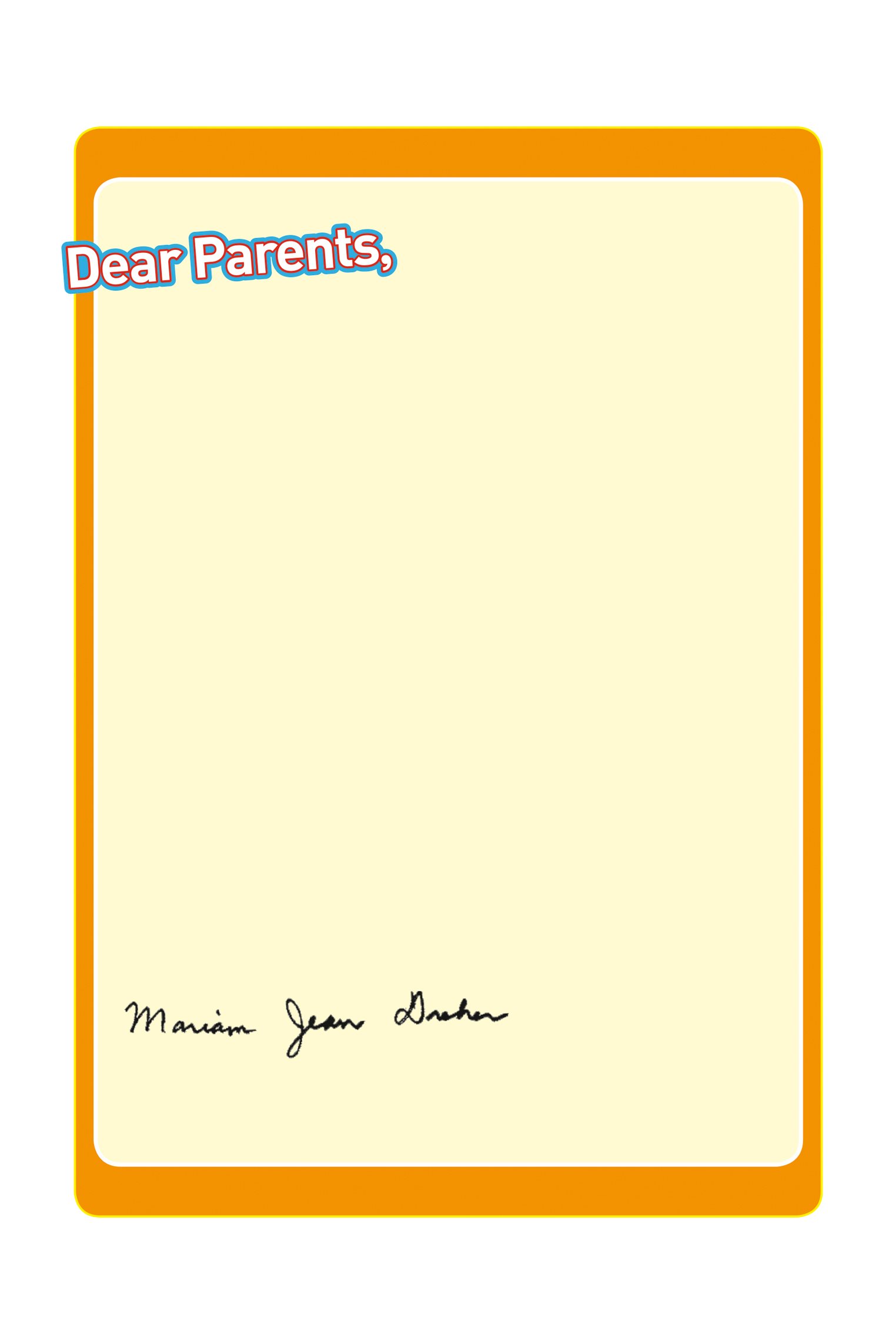
Children are naturally curious about the world around them, and
curiosity is a powerful motivation for reading. Studies show that
informational reading is critical to success in school. National
Geographic Kids Readers allow you to feed your childrens interests
and create readers who not only can read, but also want to read!
To sustain childrens excitement about reading, we have created a
special program called NATIONAL GEOGRAPHIC KIDS SUPER READERS.
As kids read each National Geographic Kids Reader, they cross
off its picture on a free National Geographic Kids Super Readers
poster that parents can download from natgeokids.com/superreaders.
Throughout the process, kids and parents go to the website and
download specially designated prizes that reward their effort. Kids
can have even more reading fun online, with lively book-related
activities, quizzes and games, fascinating excerpts, and sneak
previews of upcoming books.
The National Geographic Kids Super Readers program appeals to
kids love of accomplishment while providing them with incentives
to keep reading. When the reading experience is fun, children learn
more and achieve more. What could be better than that?
Sincerely,
Mariam Jean Dreher
Professor of Reading Education
University of Maryland, College Park

For the Mossey girls L. R.
Copyright 2019 National Geographic Partners, LLC
Published by National Geographic Partners, LLC,
Washington, D.C., 20036. All rights reserved.
Reproduction of the whole or any part of the contents
without written permission from the publisher is
prohibited.
NATIONAL GEOGRAPHIC and Yellow Border Design are
trademarks of the National Geographic Society, used
under license.
Designed by YAY! Design
Library of Congress Cataloging-in-Publication Data
Names: Romero, Libby, author.
Title: National Geographic readers : what is an
archaeologist? / by Libby Romero.
Other titles: What is an archaeologist?
Description: Washington, DC : National Geographic
Kids, [2019] | Series: National Geographic readers |
Audience: Grades K-3. | Audience: Ages 6-9.
Identifiers: LCCN 2018057777 (print) | LCCN 2018058696
(ebook) | ISBN 9781426335143 (e-book + audio) |
ISBN 9781426335112 (pbk.) |
ISBN 9781426335129 (hardcover)
Subjects: LCSH: ArchaeologistsJuvenile literature. |
ArchaeologyJuvenile literature.
Classification: LCC CC107 (ebook) | LCC CC107 .R66 2019
(print) | DDC 930.1dc23
LC record available at https://lccn.loc.gov/2018057777
The author and publisher gratefully acknowledge the
content review of this book by Debora Trein, program
officer, Human Journey, National Geographic Society,
and the literacy review of this book by Mariam Jean
Dreher, professor of reading education, University of
Maryland, College Park.
Authors Note
The word archaeology comes from the Greek word
arkhaios, which means ancient. Archaeology became
a field of scientific study about 150 years ago. But people
have been digging things up for thousands of years.
They wanted to understand the mysteries people before
them had left behind. One mystery that still hasnt been
solved can be found on Easter Island (or Rapa Nui),
Polynesia, pictured on the title page. Long ago, people
there built about 900 giant stone statues called moai.
Nobody knows how or why the islanders carved them.
On the table of contents page, the artifact pictured is a
Native American arrowhead.
Photo Credits
AS=Alamy Stock Photo; GI=Getty Images; NGIC=National
Geographic Image Collection; SS=Shutterstock
Cover, Manami Yahata/NGIC; header (throughout),
Noch/SS; vocabulary art (throughout), Denis Gorelkin/
SS;1, Viktor Gmyria/Dreamstime; 3, Stephanie Frey/
SS; 4-5, Erika Larsen/NGIC; 6-7, Kenneth Garrett/
NGIC; 8, Gordon Wiltsie/NGIC; 9, imageBROKER/SS; 10,
Jericho (gouache on paper)/Private Collection/ Look
and Learn/Bridgeman Images; 11, arhendrix/SS; 12, O.
Louis Mazzatenta/NGIC; 13, Adrian Dennis/AFP/GI; 14,
Andrey Armyagov/SS; 15 (INSET), DigitalGlobe/GI; 15,
DigitalGlobe/GI; 16, Blue Media/National Geographic;
17, Stephen Barnes/AS; 18, Keith Seramur; 19, ITAR
TASS News Agency/AS; 20, Courtesy of Sarah Parcak/
Cengage/NGIC; 21, Universal History Archive/UIG/SS; 22,
Paul Nicklen/NGIC; 23, Don Couch/Barcroft Media/GI;
24, Constanza Ceruti/Society of Woman Geographers;
25 (LE), Robert Harding Picture Library/NGIC; 25 (RT),
Abid Mehmood/NGIC; 26 (UP), starmaro/SS; 26 (CTR),
Matthias Hiekel/EPA/SS; 26 (LO), photoDISC; 27 (UP LE),
Vlad Ghiea/AS; 27 (UP RT), Bill Curtsinger/NGIC; 27 (LO
LE), Francisco Juarez/NGIC; 27 (LO RT), agnormark/
GI; 28, Universal History Archive/UIG via GI; 29 (UP),
Taylor Kennedy/Sitka Productions/NGIC; 29 (LO), Jarno
Gonzalez Zarraonandia/SS; 30 (UP), James P. Blair/
NGIC; 30 (LO), Spencer Sutton/Science Source; 31,
O. Louis Mazzatenta/NGIC; 32, Dan Wallace/Dreamstime;
33 (UP), Dave Yoder/NGIC; 33 (LO), Gregory A. Harlin/
NGIC; 34, duncan1890/GI; 35 (UP), Rui Vieira/AS; 35
(LO), Peter Corns/AP Images; 36, Joe McNally/NGIC;
37, Universal History Archive/UIG/SS; 39, William Albert
Allard/NGIC; 40, John Moore/GI; 41, Robert Harding
Picture Library/NGIC; 42, Bill Ballenberg/NGIC; 43,
Ozkan Bilgin/Anadolu Agency/GI; 44 (UP), Kenneth
Garrett/NGIC; 44 (CTR UP), Marcio Jose Bastos Silva/SS;
44 (CTR LE), James P. Blair/NGIC; 44 (CTR RT), Jennifer
White Maxwell/SS; 44 (CTR LO), Don Mammoser/SS; 44
(LO), Kichigin/SS; 45 (UP), Bethany Peterson/NGIC; 45
(CTR LE), Guillermo Pruneda/NGIC; 45 (CTR RT), Blue
Media/National Geographic; 45 (LO UP), DeA Picture
Library/Granger.com - All rights reserved; 45 (LO LE),
Jaroslav Moravcik/SS; 45 (LO RT), Paul Nicklen/NGIC;
45 (LO LO), Cedric Weber/SS; 46 (UP), The Washington
Post/GI; 46 (CTR LE), Paul Nicklen/NGIC; 46 (CTR RT),
Vacclav/Dreamstime; 46 (LO LE), ITAR-TASS News
Agency/AS; 46 (LO RT), DigitalGlobe/GI; 47 (UP LE),
Hulton-Deutsch Collection/Corbis/Corbis via GI; 47 (UP
RT), W. Scott McGill/SS; 47 (CTR LE), Erika Larsen/NGIC;
47 (CTR RT), Gordon Wiltsie/NGIC; 47 (LO LE), Wes
C. Skiles/NGIC; 47 (LO RT), Todd Buchanan/NGIC
National Geographic supports K12 educators with ELA Common Core Resources.
Visit natgeoed.org/commoncore for more information.


